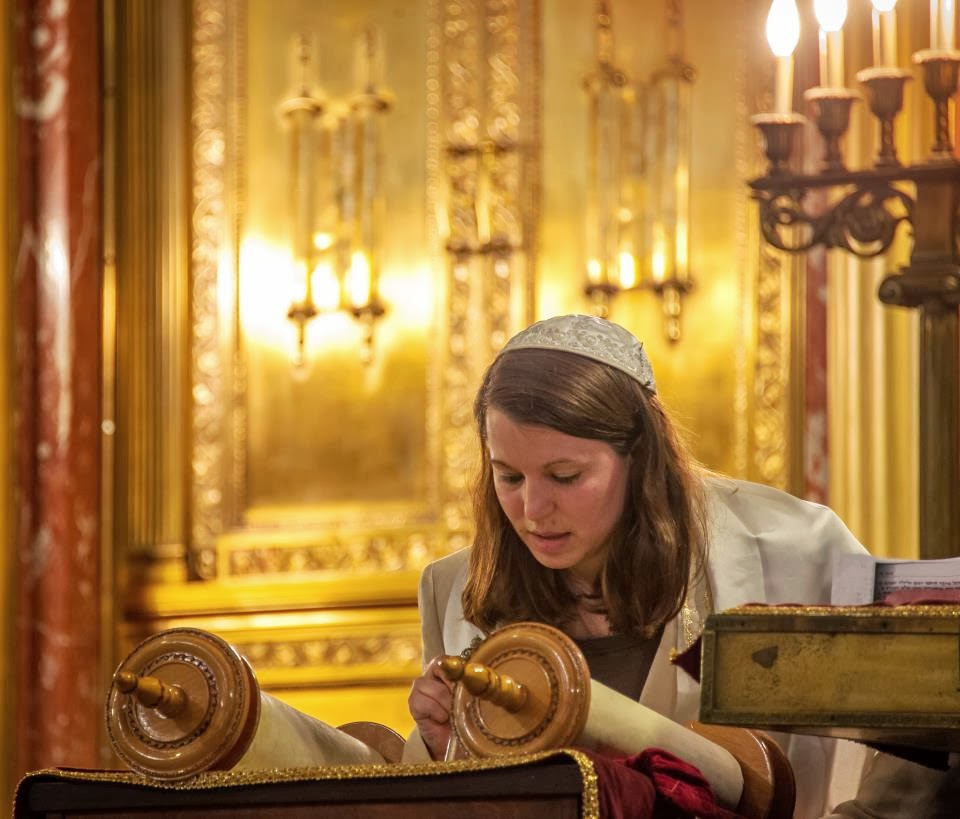In this week’s Torah portion, Moses assembles the people of Israel and tells them of G‑d’s instructions regarding the making of the Mishkan (Tabernacle). The people donate the required materials in abundance, bringing gold, silver and copper, animal skins, wood, olive oil, herbs and precious stones. Moses has to tell them to stop giving. A team of wise-hearted artisans make the Mishkan and its furnishings: three layers of roof coverings (we barely have one!); 48 gold-plated wall panels, and 100 silver foundation sockets; a veil that separates between the Sanctuary’s two chambers, and a screen that fronts it; the Ark and its cover with the Cherubim; the seven-branched menorah with its specially prepared oil; the golden altar and the incense burned on it; the anointing oil; the outdoor altar for burnt offerings and all its implements; the hangings, posts and foundation sockets for the courtyard; and the basin and its pedestal, made out of copper mirrors. An accounting is made of the gold, silver and copper donated by the people for the making of the Mishkan (so they can get their tax refunds at the end of the year). The building is completed and all its components are brought to Moses, who assembles it like an Ikea desk and blesses it. A cloud appears over the Mishkan, signifying the divine presence that has come to dwell within it.
Aside from the parts of the mobile sanctuary that pertain to animal sacrifices, which many believe to be barbaric and may not be practiced even if we still had a Mishkan to perform them in, there are other questionable parts to this building story. The ornaments of the tabernacle are rather extravagant. Forty-eight gold panels?! One hundred silver foundation sockets? And the cherubim, essentially angels, on the ark covering? Why such ostentation for a transitory building in the wilderness? This is not the permanent Temple that would later be used in Jerusalem; this is a sanctuary that has to be taken along with them for the next forty years across the desert. So, why bother? Furthermore, how did all the children of Israel have so much stuff? Some gave jewelry, while others just gave non-descript pieces of gold and silver and precious stones. These are refugees from slavery. It’s hard for me to wrap my head around the idea that they just happened to have more than enough for the Mishkan’s needs.
Look around at our synagogue for a moment. You’ll notice, it was built with intention, it has some ornate artistry on the ark, but not to the extent that is described for the tabernacle. It would be considered fiscally irresponsible and embarrassingly showy and unnecessary by modern standards to have so much attention to detail and expensive materials. And the cherubim? I don’t think I’ve ever seen an ark with angels on it. In this parsha, there is no description given to the cherubim, and in other areas when heavenly beings are described, they are vague and confusing, sometimes they have 6 wings, they’re described differently in different prophet’s visions of them. So we don’t really know what the ark cover would have looked like. But I think it’s safe to assume it didn’t look a whole lot like the designs common on arks now.
What does it say about our biblical ancestors and what does it say about us that they were so much more ostentatious? In a time when they didn’t even know where their food or water would be coming from, when their very survival was in question, they spent time and energy making a structure beautiful enough for G-d to dwell in. Now, we enjoy making a structure beautiful enough for us to feel G-d’s majesty, but the beauty is more for us than for G-d, who is with us everywhere and not confined to or contingent upon a building, however beautiful. Perhaps it was merely a change in tastes and understanding of needs and of G-d. Perhaps it’s due to economic forces. In the wilderness, they were completely dependent on G-d’s mercy and help. That gold and precious stones were not going to be used for currency, because there were no stores to shop at, no goods to trade for. Now, there is a constant competition for our stretched dollar. Do I pay my rent and buy my family food, or do I give all my resources to the synagogue? It’s a much harder choice to make. As such, I don’t know of any congregation in the history of Judaism that has had to turn down more donations. I think Moses was the first, last, and only spiritual leader to have that problem. It would be nice if we all had a little of the Israelite’s zeal for the structural integrity of our houses of worship, and even nicer if our funds had as little else to be spent on as those of the Israelites, but while maintaining a level of sensibility in our décor so as not to go overboard.
So as we go forward, let us be mindful of the upkeep of our building, without ever being too concerned with the superficial. And may G-d dwell in this Mishkan no matter what it looks like. Amen.

No comments:
Post a Comment